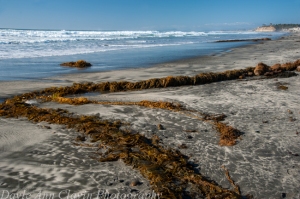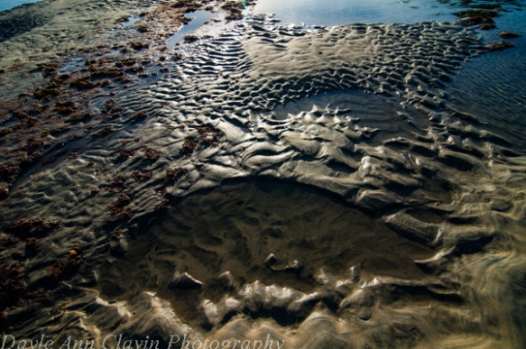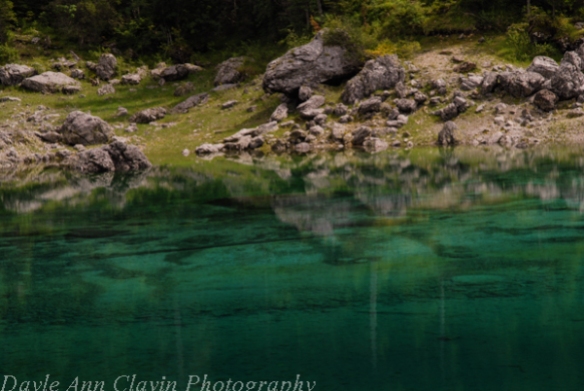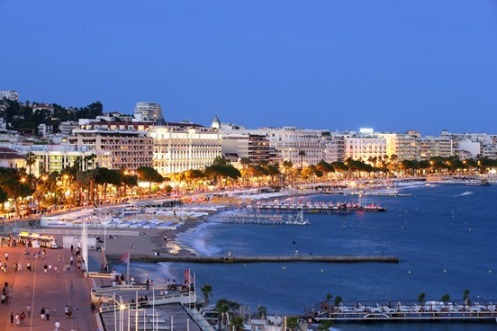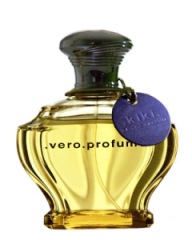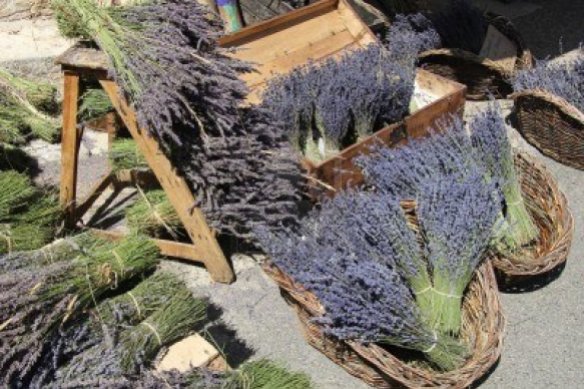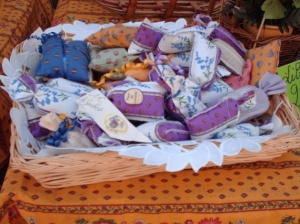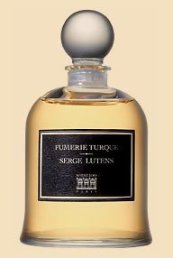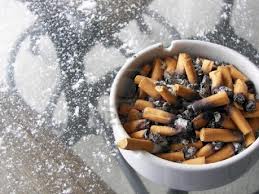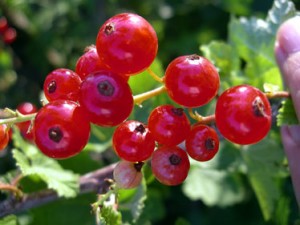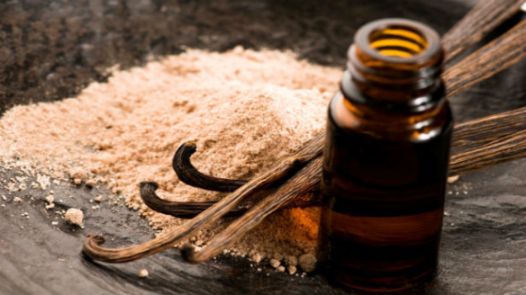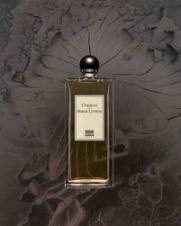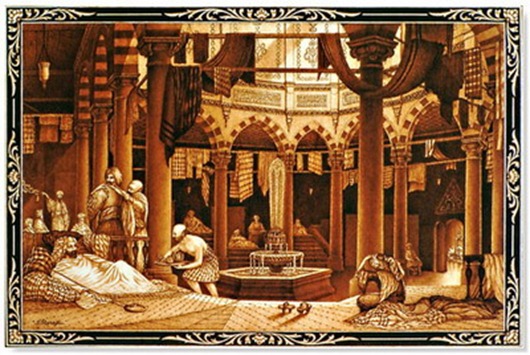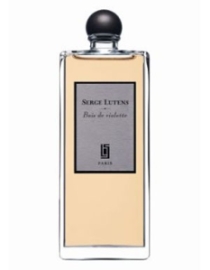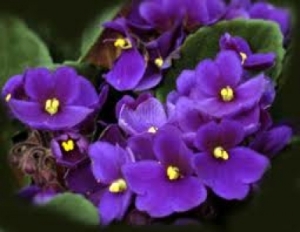The beach stretched on for miles, dotted with rocks, and garlanded by long necklaces of seaweed. A brisk, chilly Atlantic wind stirred the waters to a salty fury, and carried the smell of the myrtle and cedar trees that lined the cliffs. Though the sun shone warmly, that fragrant wind cut through the heat, bring the forest to the beach. Dry cedar danced with the herbal, mentholated aromatics of the myrtle, but both were wrapped with ribbons of kelp as if the sea insisted on joining the game. On the beach, as the water glittered in alternating shades of cold blue and warm turquoise, solitary walkers were covered with a fine spray of salt which mixed with their heated skin, creating an interplay of salty and sweet, amber and white, gold and green.
Sun, surf, sand, and fragrantly herbal, mentholated trees are the simple bouquet of Acqua di Sale, an eau de parfum from Profumum Roma. It is an Italian niche house founded in 1996, and commonly called Profumum by most. (The name is also sometimes written as “Profvmvm,” but, making matters more complicated, the company puts it as “Pro Fvmvm” on their website). As regular readers will know, I’ve become utterly obsessed with Profumum’s fragrances, after trying their two great, incredibly rich ambers, Fiore d’Ambra and Ambra Aurea. I ended up falling hard for the latter with its gorgeous, rare, salty, expensive ambergris. In fact, I think is the best, richest, and most luxurious amber fragrance around.
Given the scorching heat of the summer, it seemed natural that my next foray into Profumum’s wares would be the salty, sea fragrance, Acqua di Sale. Profumum‘s website describes it very simply:
The sea waves that brake on the shore donate new shells,
with a multitude of sizes and shapes,
to the sand that glimmers in the morning sun of August.
In the desert beach flutter heedlessness and freedom.
The notes, as compiled from Fragrantica and Luckyscent, consist of:
virginia cedar, seaweed or marine algae, salt and myrtle.
Acqua di Sale opens on my skin with a burst that takes me immediately back to the sea: salty kelp lying on the rocks, sea air, pure salt, and a splash of salty water. Yet, the forest is there, too, with the minty, aromatic, herbaceous notes of myrtle fused with dry, peppery cedar. There is a surprising creaminess to Acqua di Sale’s base that definitely lends itself to the Noxema comparisons made by a few commentators. For non-American readers, Noxema is a thick, white, face cream and cleanser that first came out in 1914, and which has a very herbal aroma. The reason for the similarity here is due to the myrtle which has a herbal, Mediterranean aroma, and whose essential oil is very similar to eucalyptus in aroma. Noxema is infused with camphor, menthol, and eucalyptus. Yet, the Noxema nuance to Acqua di Sale is very subtle and, for me, extremely fleeting.
Moments later, there is a strong undercurrent of watery saltiness that strongly evokes a beach. It’s not the sort of beach that you’d find in Rio or Hawaii with its aroma of tropical florals and suntan oil. Instead, the beach in Acqua di Sale is either in the Atlantic, in Normandie or Bretagne, or nestled somewhere in the South on the rocky coast of the Mediterranean. It’s a windswept, desolate, slightly chilly beach where the salty air is filled with brisk, bracing herbaceousness and woodiness, and where the kelp far outnumbers the humans.
Yet, to be honest, there is something initially quite synthetic in the base that supports Acqua di Sale’s woody, sea facade. It feels like a subtle tinge of clean, fresh, musk mixed with slightly artificial ozonic and aquatic elements. It can’t be helped, I suppose, since neither salty kelp nor salty water is a natural scent in perfumery, and light musk is always synthetic. In fairness, the synthetic accord is a lot less abrasive, fake, or extreme than it is in many ozonic, clean, maritime scents. Acqua di Sale is not Armani‘s Acqua di Gio for me — and it’s a fact for which I’m enormously grateful. Even better, it only lasts a brief time, thanks to the strength of the other notes.
Fifteen minutes into Acqua di Sale’s development, the cedar and myrtle emerge with a roar. The combination feels crystal clear, pealing like a bell’s single note in the wilderness, a strong, bracing, brisk aroma of herbal, aromatic, chilly eucalyptus and woods. The smell is actually far more herbaceous and dry than purely mentholated, and it never feels medicinal. It’s lovely, especially when subsumed under that veil of sea water and salty kelp, though it is a very simple bouquet when all’s said and done.
Acqua di Sale doesn’t change in any profound way for a few hours. Around the 75-minute mark, the perfume becomes softer, rounder, and smoother. Any synthetic traces have long gone, leaving a very briskly refreshing, cool, airy fragrance. Close to the end of the second hour, Acqua di Sale’s projection drops quite a bit, hovering now just a few inches above the skin, though the perfume is still somewhat strong within its tiny cloud.
Then, suddenly, just after the end of the third hour, Whoa Mama! Acqua di Sale turns into amber. The brisk, bracing, maritime, herbal, mentholated eucalyptus, cedar, and salt perfume transforms unexpectedly into almost pure, gorgeous, salty, sweet, ambered silk with just a sprinkling of herbal dryness around the edges. I couldn’t believe just how drastic the change was from the first hour. Now, Acqua di Sale is an incredibly snuggly, soft, plush amber first and foremost. Its sweet, almost cushiony warmth is infused with saltiness, leading me to believe that there is some ambergris in the perfume’s base as well. I’ve noticed in the past that Profumum doesn’t seem to give a very complete list of notes, and they seem to love their ambergris, so I wouldn’t be surprised at all if they tossed it into Acqua di Sale as well.
The result is so lovely, I want to burrow in it. It evokes the feeling you have after a long day at the beach when your sun-soaked skin radiates a lingering soft, salty, sweet warmth, and your slightly chilled body is wrapped in a dry towel. The aroma is incredibly soothing, relaxing, and comforting, especially given the hints of dry, eucalyptus-infused cedar to give it some character. I can’t pinpoint the cause of the sweetness which is too rich to be vanilla, and, yet, there is something vaguely similar in Acqua di Sale’s undertones. I suspect it’s some sort of resin, perhaps something like Tolu Balsam which is somewhat vanillic in character but also more than that. The base and drydown in Acqua di Sale has a similar sort of sweet, golden richness, and it hovers like the finest silk right on the skin.
Around the 4.75 mark, Acqua di Sale is a sweet, salty, golden, creamily smooth amber that feels as plush as a plump pillow. It’s just barely speckled with bits of fragrant, aromatic cedar and myrtle, creating a fragrance that is incredibly cozy and elegant. I feel like snuggling in, burrowing my nose deeper and deeper into that, alas, very soft, skin scent. How I wish it were stronger, but Acqua di Sale is too fine, sheer and gauzy at this stage. And it just gets softer still. At the start of the sixth hour, Acqua di Sale is an abstract veil of sweet, slightly salty amber, and it remains that way until the very end.
All in all, Acqua di Sale lasted just short of 10.75 hours on my perfume-consuming skin. It would sound like a hell of a lot, but Profumum Roma makes what may be the richest, most concentrated perfumes on the market, containing between 43% and 46% perfume oil. It’s astonishing, but so, too, is their longevity. The last, faintest traces of Ambra Aurea died away after almost 16 hours on my difficult skin, and that was with just a few small dabs. (It’s one of the many reasons why I love it so!) On normal skin, I could easily see the longevity of Ambra Aurea exceeding 20 hours or more, especially when sprayed. I’ve heard stories of people getting some insane numbers from Profumum across the board, with a few saying traces of their fragrance lasted even through a shower — and I fully believe it. So, if 2 small-to-medium dabs of Acqua di Sale lasted 10.75 on my voracious, crazy skin, those of you with normal skin should expect substantially longer. The sillage, however, is not profound or even moderate, which may be expected from a scent that is so aquatic, maritime and herbal for a portion of its lifespan. It simply won’t be as strong as an oriental amber fragrance.
Profumum’s fragrances seem to consistently reflect a very Italian signature. Their style seems very similar to that of famous, high-end, Italian fashion designers, like Giorgio Armani, who intentionally opt for fluid, minimalistic, clean, very simple lines but always put together with great refinement and the richest fabrics. Profumum’s perfumes are very much the same: they have just a handful of notes done in a simple, somewhat linear manner, but with great richness and at the most concentrated levels. The downside to that is that the fragrances are easily, and with some justification, accused of being… well, too simple and linear. They are. No question about that at all. And it makes Profumum’s prices far too high for some people. Again, I won’t argue that, though I do believe that price can be a very subjective issue.
For me, however, there is just something about the Profumum fragrances that I’ve tried thus far that drives me a little wild. Quite simply, it’s that ambered base. I love it, even in the Fiore d’Ambra perfume that didn’t sweep me off my feet as much as Ambra Aurea. There is a rich, infinitely creamy, satiny lushness and luxuriousness about the amber that differs from all those I’ve tried before. If Acqua di Sale didn’t have it, I would still find the fragrance to be a refreshing, brisk, well-crafted summer scent and I would like it. Not a hell of a lot, because it isn’t really my personal style, but I would like it. However, with that sudden twist into amber plushness, Acqua di Sale becomes quite lovely. It transforms into a more interesting, but balanced, version of two different fragrances with one half being refreshingly brisk for the summer’s hot, humid days, and one half being a snuggly, cozy, relaxing scent for the summer’s cooler evenings.
The reviews for Acqua di Sale are extremely mixed. On Basenotes, a number of people like it, but the Italian commentators seem to loathe it with the passion of a thousand fiery suns. I suspect that they may actually have issues more with Profumum itself than with Acqua di Sale, given the various comments like: “In italy this is a cult scent for all the snob-ish ladies without class but with a biiiiiig credit card. A scent that litterally makes me laughing so hard I cant’ breathe.” Or, from another Italian: “Mediocre scent despite the caos that in Italy turns it as a cult among the ignorant members of the middle class guided by the great joystick.” However, the perfume does have its admirers, though even some of those don’t find Acqua di Sale to be hugely complex or “dramatic.” I would agree with them, if it weren’t for that unexpected shift into amber that I experienced and which I don’t see much talk about in discussions about the fragrance. Still, the fans on Basenotes are hugely outweighed by the critics (even the those who aren’t Italian snobs) who find Acqua di Sale to have an artificial, synthetic or chemically sweet element that they couldn’t bear.
Fragrantica reviewers, however, are significantly more enthusiastic about Acqua di Sale. To wit, one calls it an Italian “masterpiece” that is “oceanic, wild, salty. I imagine seaweeds on a reef in the ocean. I imagine a lighthouse in the middle of a stormy sea. Is is pure freedom, also dramatic if you think to the power of the ocean.” A number of people find the scent to be extremely evocative and, at times, almost sexual:
- This perfume melts to your skin. This is what sex on the beach smells like.
- There is something special about this fragrance for me. It is salty and marine, woody and herbal but also sweet. It is thick, fresh and aromatic (thanks to cedar and myrtle). Very sensual and sexual. As some say – it is like a wet warmed-up naked skin by the seaside in the heat of summer, like “sex on the beach fantasy”. Sexy, sensual and provocative.
- At first it feels as if I`m walking in a pine forest,very green and tangy, I am approaching the sea, I can smell it in the distance,
as I walk on a cedar chip trail.Now I am on the beach, the salty air and mist of cold ocean hit my face in a sudden gust of wind.A cold fog rolls in, I smell seaweed as it dances with the tide. Very
realistic indeed! […]P.S.,although suitable for men and women,I feel like a mermaid when I wear this:-) !! [Formatting changed and spacing added for this comment.]
Others are not as enthused, calling Acqua di Sale “over-priced” (which it is), or saying that it will “only make you smell like an elegant codfish.” (Actually, that comment comes from another Italian. I wonder why they all hate it so much?) One poster found Acqua di Sale to start with a screechingly artificial, sweet note that evoked Coppertone, before it turned into a lovely “ozonic chypre” with a “complex woody drydown” that she really liked.
There aren’t a ton of blog reviews for Acqua di Sale out there. Perfume-Smellin’ Things has a short paragraph on the scent which Marina actually expected to fully dislike, but it surprised her:
Described by Luckyscent as “the most realistic ocean scent”, with notes of “aroma of salt on the skin”, myrtle, cedarwood and marine algae, it was meant to be my least favorite of the bunch. It is actually not bad on me at all, i.e. it is not too obviously, too nauseatingly aquatic. In fact, it is really quite good. It is the scent of the skin after a long swim in the sea. In a cold, Baltic Sea. I don’t know why, this is how it smells to me. It is understated but still has a presence and certain sensuality about it. It is slightly minty, very subtly sweet, and a little spicy. It is very nicely done, it surprised me. If ever I were on the market for this kind of scent, this would be the scent I’d buy.

Etretat, near Bretagne in Northern France. Photo: Dayle Ann Clavin Photography, used with permission.
There is a more unqualified, rave review at The Scentualist, who calls it “the authentic perfume for the sea lovers, a scent that is capable to transport you into a universe filled with marine algae and a reminder of the delightful moments spent in the summer sun.” Meanwhile, Confessions of a Perfume Nerd was not only surprised to find Acqua di Sale to be her “perfect sea scent” (when she doesn’t normally like that sort of thing, it seems), but she also found it beautifully evocative:
Aqua di Sale is the sea at an forgotten, rocky bay at the mediterrean during autumn storms.
Aqua di Sale is the smell of a salty sea, but also soft notes of the cilffs, the air and the far away forrest. Aqua di Sale make me long for a mediterrean sea off-season, with abandoned taverns and beaches in rain and fog, taking long walks along empty shore lines and now and sit down on a rock and feel the smell of sea. Have you ever dreamed of being a lighthouse keeper on a distant island, Aqua di Sale may help your daydreams and imagination a little.
Clearly, Acqua di Sale triggers feelings that span across the board. From those who find it to smell fishy or like Noxema, to those who find it chemical or just plain dull, to those who adore it and find it to be, quite literally, the olfactory sensation of “sex on the beach” or a chilly, oceanic “masterpiece,” the reactions are quite strong. Obviously, this is not a perfume to buy blindly, especially at Profumum’s prices.
I personally like Acqua di Sale and would wear it if a bottle were to miraculously drop into my lap. However, I would do so primarily because of the drydown which, on me, was gorgeous, soft, luxuriously smooth, sweet, salty amber in essence. The rest of Acqua di Sale was pretty and very refreshing, but I’m generally not one for sea fragrances, no matter how powerfully evocative or well done. Or, rather, to be more precise, I’m not one for sea fragrances at $240 or €180 a bottle. So, it’s a mixed bag, all in all. One thing is for certain: my interest in Profumum Roma remains quite strong.
Postscript: I’d like to express my gratitude and thanks to Dayle Ann Clavin Photography who was generous enough to allow me to use her magnificent photos. All rights reserved. You can find more of her award-winning images at her website (link embedded), where she offers a wide range of services. Her work encompasses everything from photo-journalistic series, to business-related imagery, personal portraits, and wedding photos.


